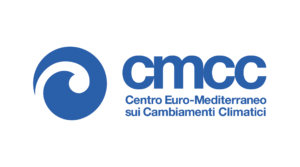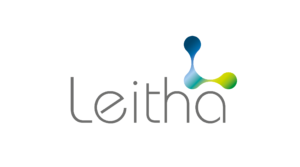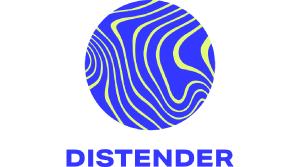Project
In Europe, over the last 40 years, extreme climate events have caused economic losses amounting to an estimated €446 bn, 81% of the total losses caused by natural hazards. Finding effective strategies to manage the risks associated with extreme climate events is imperative.
Within The HuT project, European research groups, institutions, and stakeholders will work in order to integrate and leverage best practices and successful multi-disciplinary experiences.
Emphasis will be placed on assessing the transferability of the developed innovations to different territorial contexts and hazards. The activities will be designed to maximise the chances of these innovations having a long-lasting impact, inside and outside the demonstrators’ arena.
The project’s main ambition is to promote a set of trans-disciplinary risk management tools and approaches that could be adopted and used in as many situations as possible. Specific attention will be devoted to assessing the transferability of the developed innovations across territorial contexts and hazards.
Objectives
Fast-track implementation of DRR solutions
-
learning how all types of warnings can be made more effective in saving lives, livelihoods and property.
Improve implementation of human-centric disaster risk reduction (DRR) activities
-
producing educational and engagement materials to promote cultural change, adapted to different audiences and purposes (education of school children, public awareness campaigns, and integrating culture into the DRR process at some selected demonstrators).
Facilitate multi-hazard systemic risk reduction
-
innovative financing options will be identified, with special attention to addressing insurance protection gaps and opportunities.
Develop and transfer DRR solutions
-
tailoring several modelling approaches to be adopted for risk characterization (hazard or exposure) while exploiting different open data sources.
Streamline the transferability and the scaling up of the DRR solutions
-
policy briefs will be developed in order to scale up the interventions and tools, and policy-relevant options for DRR, adaptation, and resilience, to support the transition towards managing systemic risks of climate extremes.
Impacts

Cities, regions, local autorithies
Local authorities of the demonstrators will be actively involved via advocacy strategies in line with the local communication, dissemination and exploitation (CDE) strategy.
Local communities and citizens
Within the project, several social media animations and campaigns, gamification activities, citizen science tools, public workshops and community-led events will take place.

Local, European and international public
The project contents will be distributed to the media, press agencies, and direct contacts with correspondents at the EU and local levels.
Civil society, NGOs, representatives of minorities
Some dedicated content (such as factsheets or guidelines) and punctual social media interactions will reach out to members of civil society.

Policy-makers
Public institutions and policymakers stand to benefit from The Hut. The work undertaken will inform policy, including strategies such as DRR (disaster risk reduction), CCA (climate change adaptation), environmental management, biodiversity, and ecosystem services.
Industry and other potential users
The HuT project will develop potential solutions for industry.
Consortium

NATIONAL COMMISSIONER OF THE ICELANDIC POLICE
Project Structure
The project is divided into 7 work packages:
Work Package 1: Demonstrators’ arena
The ten demonstrators will test and implement DRR solutions thanks to the shared expertise, knowledge, data, services and resources within the consortium.
WP Leader:
HELMHOLTZ-ZENTRUM HEREON GMBH
Jo-Ting Huang-Lachmann (jo-ting.huang-lachmann@hereon.de)
Work Package 2: Human Behaviours
This WP will include the analysis of human-centric DRR activities in order to provide better long-term adaptation strategy and resilience building capacities.
WP Leader:
UNIVERSITY COLLEGE LONDON
Carina Fearnley (c.fearnley@ucl.ac.uk)
Work Package 3: Governance and policy
The analysis of governance, policy, market enablers and local and national barriers will facilitate multi-hazard systemic risk reduction. Some gaming tools will be developed to support DRR policy processes.
WP Leader:
INTERNATIONALES INSTITUT FUER ANGEWANDTE SYSTEMANALYSE
Joanne Linnerooth-Bayer (bayer@iiasa.ac.at)
Work Package 4: Science and technology
This WP will develop and transfer DRR solutions which require scientific and technological expertise.
WP Leaders:
FONDAZIONE CENTRO EUROMEDITERRANEO SUI CAMBIAMENTI CLIMATICI
Guido Rianna (guido.rianna@cmcc.it)
Work Package 5: Transferability and scalability
The DRR solutions adopted in the ten demonstrators will be streamlined outside their original context. A cross-fertilisation international DRR nexus forum will be set up to allow different stakeholders to cooperate.
WP Leader:
GLOBAL WATER PARTNERSHIP CENTRAL AND EASTERN EUROPE
Anna Smetanova (anna.smetanova@gwpcee.org)
Work Package 6: Communication, dissemination and exploitation
A communication, dissemination and exploitation strategy will be set up to consolidate project visibility and disseminate its results and good practices. A solid post-project exploitation strategy will also be set out.
WP Leader:
FONDAZIONE ICONS
Ilaria Bonetti (ilaria.bonetti@icons.it)
Work Package 7: Coordination and management
This WP includes effective governance of the project including financial and data management, monitoring and reporting of tasks and deliverables.
WP Leader:
UNIVERSITA DEGLI STUDI DI SALERNO
Michele Calvello (mcalvello@unisa.it)





























